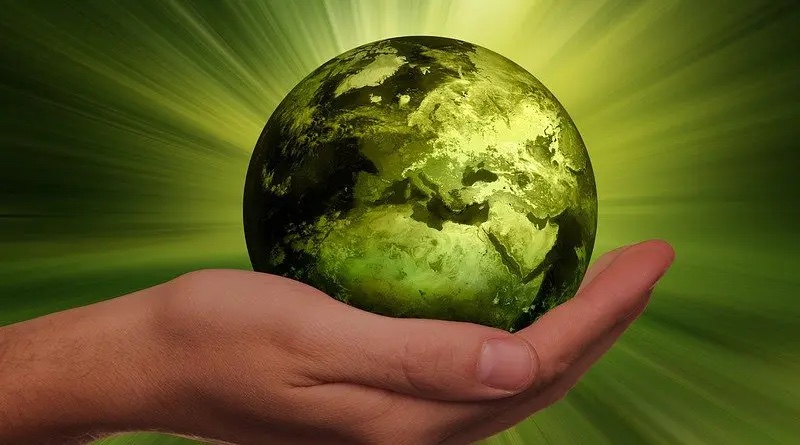A Rescue Plan For People And The Planet – OpEd
By Dr. Yusuf Jameel and Daniel Jasper
We can—and must—harmonize climate and development goals in this critical decade
Imagine telling the next generation that we are leading them to a world where infectious disease will be more prevalent; mental health issues, extreme heat, and human displacement will be more common; and our infrastructure will be more vulnerable to climate hazards. This is the path we are on right now, according to a new assessment by the Sustainable Development Solutions Network.
The report warns that we are “going in reverse” on the path to achieving the Sustainable Development Goals (SDGs), a set of ambitious but achievable targets for enhancing human well-being that address a range of issues from poverty and education to energy access and climate action. The authors note that our current trajectory could leave a wider gap between high-income countries (HICs) and low- and middle-income countries (LMICs) by 2030 than existed when more than 190 countries came together to establish the goals in 2015.
At the same time, the world remains off track for limiting warming to 1.5°C as called for under the Paris Agreement, an aim that requires emissions to peak by 2025 and drop by 45% by 2030.
This combination makes the 2020s a pivotal decade for humanity. In the words of the United Nations Secretary-General (UNSG), the world urgently needs a “rescue plan for the people and the planet;”
So who are the worst impacted by the combined failure to meet the SDGs and the Paris Agreement? It is the people living in extreme poverty (less than $1.90 a day) in LMICs who have contributed the least to climate change.
Extreme poverty and climate change are deeply intertwined. Poverty reduction efforts that do not consider carbon emissions or account for rising temperatures and increased frequency of extreme weather will fail because such events have shown to reverse the gains made in poverty alleviation, reducing inequality, and improving health and food security. Similarly, climate mitigation strategies that do not improve human well-being are counter to the very purpose of mitigation effort, which at its core is to prevent the negative impact of climate change on human lives.
This intertwining is a challenge. But it’s also an opportunity. It means that even as the problems are connected, so are the solutions. There are highly effective actions we can take that improve human well-being and reduce greenhouse gas emissions at the same time. Initiatives that improve agriculture and agroforestry, protect and restore ecosystems, provide clean energy, and foster equality. can generate enormous direct and indirect sustainable development co-benefits, such as reducing poverty and improving food security, health, education, gender equality, and access to energy.
Such powerful interventions that address both the SDGs and climate goals in LMICs are like big wins for development banks. Yet, many solutions remain grossly underfunded for a variety of reasons including staff capacity, difficulty in monitoring direct and indirect benefits, as well as, competing priorities. For example, adopting clean cooking and providing clean energy—both of which are fundamental in meeting several SDGs and climate goals—are experiencing roadblocks. Investments in clean cooking initiatives are an order of magnitude lower than the necessary amount to achieve universal access which is estimated to be US $10 billion, yet the costs of inaction are US $2.4 trillion. Clean electricity projects, however, remain scarce and stymied in LMICs by high-interest rates and risk premiums.
The climate clock is ticking. We are racing against time. Will we leave the next generation a better world or a legacy of failure? A serious rescue plan can be nothing short of a full-scale mobilization of human, technological, and financial resources. This will require HICs like the U.S. to deliver on past financing commitments as well as take a new approach to investment frameworks.
This new approach must change the reward system for climate and sustainable development finance. More than 90% of climate finance is dominated by debt or equity where the investor expects a financial return. Climate financing can no longer be measured by how much capital it returns to the lender but, instead, by how much it reduces emissions, how many lives it transforms, and how resilient it makes the recipient community. An investment model that puts the well-being of humans and the environment first is our only hope for a thriving future.
This fall, world leaders will have multiple chances to deliver on past commitments and put the world on track to meeting climate and development goals. Events such as the SDG Summit and the Climate Ambition Summit in September as well as COP28 beginning in November will be crucial decision points at which policymakers will have the chance to deliver a “rescue plan for people and the planet.”
Now more than ever, policymakers must ask themselves: What story do we want to be able to tell the next generation? One in which we knowingly created a more unequal and unstable world for them? Or one in which we did everything in our power to give them the best chance possible?

